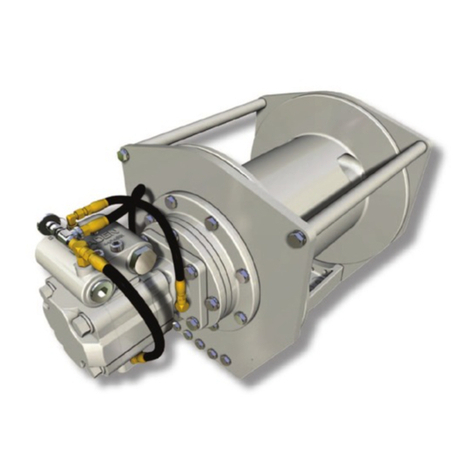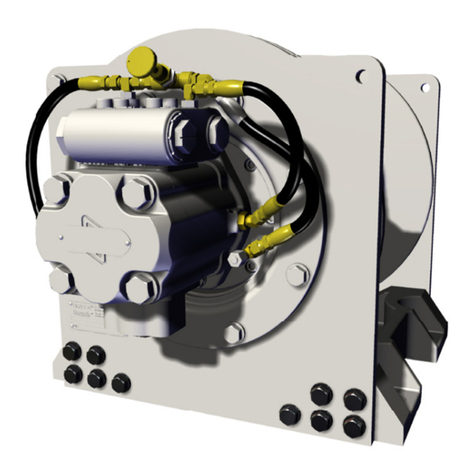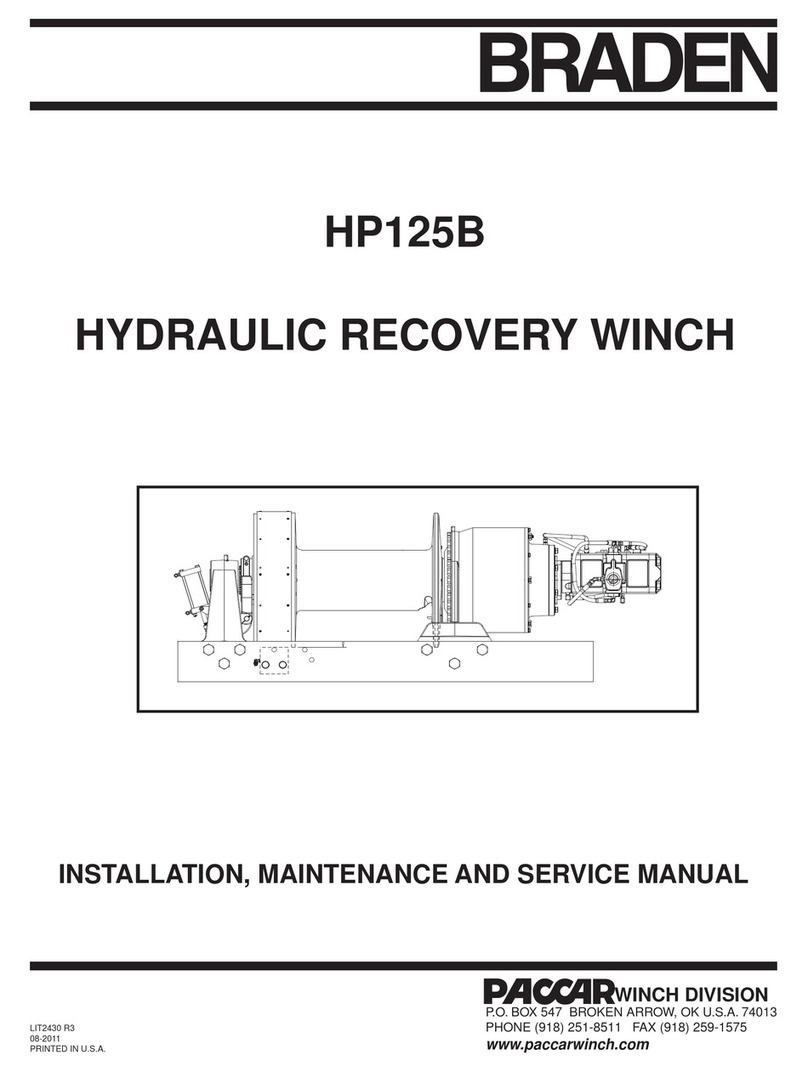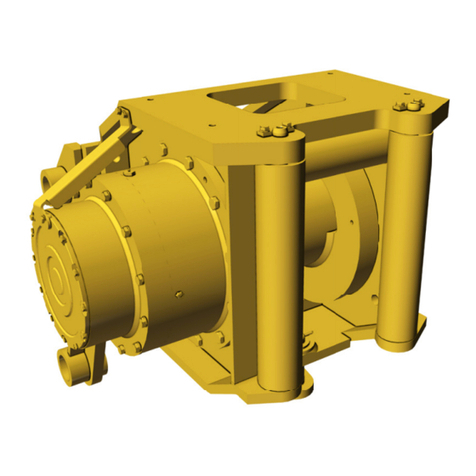
5
1. Be certain equipment (boom, sheave blocks, pendants,
etc.) is either lowered to the ground or blocked securely
before servicing, adjusting, or repairing winch.
2. Be sure personnel are clear of work area BEFORE op-
erating winch.
3. Read all warning and caution tags provided for safe
operation and service of the winch and become familiar
with the operation and function of all controls before
operating the winch.
4. Inspect rigging and winch at the beginning of each work
shift. Defects should be corrected immediately. Do not
operate a winch with defects.
5. Keep equipment in good operating condition. Perform
scheduled servicing and adjustments listed in the Pre-
ventive Maintenance section of this manual.
6. An equipment warm-up procedure is recommended for
all start-ups and essential at ambient temperatures be-
low +40°F (+4°C). Refer to Warm-up Procedure listed in
the Preventive Maintenance section of this manual.
7. Do not exceed the maximum pressure (PSI, bar) or ow
(GPM, lpm) stated in the winch specications found in
the specic sales brochure.
8. Operate winch line speeds to match job conditions.
9. Protective gloves should be worn when handling wire/
synthetic rope.
10. Never attempt to handle wire/synthetic rope when the
hook end is not free. Keep all parts of body and cloth-
ing clear of cable rollers, cable entry area of fairleads,
sheaves, and winch drum.
11. When winding wire/synthetic rope on the winch drum,
never attempt to maintain tension by allowing wire rope
to slip through hands. Always use hand-over-hand tech-
nique.
12. Never use wire/synthetic rope with broken strands. Re-
place wire/synthetic rope that is damaged. Refer to wire
rope supplier manual.
13. Do not weld on any part of the winch without approval
from PACCAR Winch Engineering.
14. Use recommended hydraulic oil and gear lubricant.
15. Keep hydraulic system clean and free from contamina-
tion at all times.
16. Use correct cable anchor for wire/synthetic rope and
pocket in drum.
17. Do not use knots to secure or attach wire/synthetic rope.
18. The BRADEN-designed wire/synthetic rope anchors are
not intended to support the rated load. ALWAYS main-
tain a minimum of ve wraps of wire rope on the drum or
a minimum of eight wraps of synthetic rope on the drum.
It is recommended that the last ve wraps of wire rope or
last eight wraps of synthetic rope be painted bright red to
serve as a visual reminder.
19. Never attempt to clean, oil or perform any maintenance
on a machine with the engine or prime mover running,
unless instructed to do so in this manual.
20. Never operate winch controls unless you are properly
positioned at the operators station and you are sure per-
sonnel are clear of the work area.
21. Assure that personnel who are responsible for hand sig-
nals are clearly visible and that the signals to be used
are thoroughly understood by everyone.
22. Ground personnel should stay in view of the operator
and clear of the winch drum. Do not allow ground per-
sonnel near wire/synthetic rope under tension. A safe
distance of 1-1/2 times the working length of the rope
should be maintained.
23. Install guarding to prevent personnel from getting any
part of body or clothing caught at a point where the cable
is wrapped onto the drum or drawn through guide rollers
or potential pinch points.
24. Install switches or valves that will shut o power to the
winch, in locations where they can be reached by any-
one entangled in the rope before being drawn into the
winch or any pinch point.
Safety for operators and ground personnel is of prime concern. Always take the necessary precautions to ensure safety
to others as well as yourself. To ensure safety, the prime mover and winch must be operated with care and concern by
the operator for the equipment, and a thorough knowledge of the machine’s performance capabilities. The following
recommendations are oered as a general safety guide. Local rules and regulations will also apply.
GENERAL SAFETY RECOMMENDATIONS


































